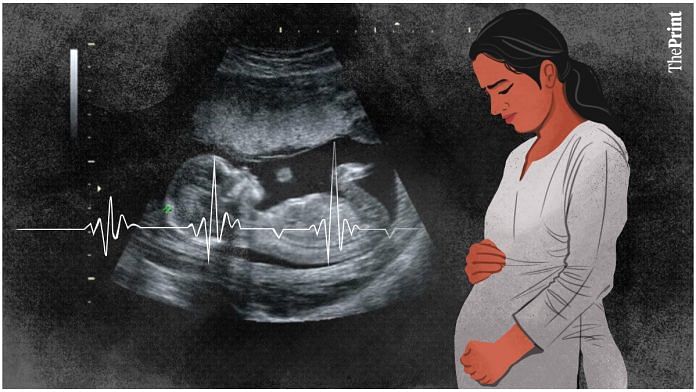Bengaluru: Karnataka recorded an alarming decline in child sex ratio — from 947 in 2021 to 929 in 2022 — according to official data from the state government based on the Civil Registration System (CRS).
The child sex ratio was 950 in rural areas and 946 in urban areas, according to the 2011 Census data.
Chikkaballapura, about 60 km from Bengaluru, had one of the lowest child sex ratios at birth at 868 in 2022, CRS data shows. Of the total 31 districts, 22 have shown decline.
The steepest fall was seen in Bengaluru Urban where it dropped from 1,715 child sex ratio in 2019 to 949 in 2022, a trend many experts attribute to “floating population”.
“All this (drop in child sex ratio) is happening because of illegal sex determination and abortion clinics. Small changes (in child sex ratio) are fine but when they are severe, it indicates that something is wrong,” Karnataka health minister Dinesh Gundu Rao told ThePrint.
The data was placed before the legislature in the Winter Session in Belagavi earlier this month.
The 18-point drop, Rao says, comes in the backdrop of the police unearthing what appears to be a thriving sex determination and abortion racket in the state.
On Sunday, the police arrested the owner of a hospital in Hosakote, just on the outskirts of Bengaluru, after a surprise visit by officials of the health department about a week ago led to the recovery of a female foetus dumped in a bin.
A senior police officer from the Criminal Investigation Department (CID) said that in Bengaluru’s Byappanahalli, over 360 instances of female foeticide were found.
“We are preparing the report and will hand it to the health department who will then take it further, including filing of the charge sheet,” the officer said.
The problem is not new, as it finds a mention in the state economic survey of 2022-23. “Prevent sex determination and selective abortion of female foeticide to increase the sex ratio,” has been listed under ‘Challenges and Way forward’ in the year-old survey.
Also Read: Karnataka’s sex ratio at birth plummeting, govt data shows. Not so straightforward, say experts
‘Male child as pension, PF’
Even though there has been an uptick in average literacy levels in Karnataka, declining sex ratio continues in the state, known the world over as the ‘technology capital’, ‘startup hub’ and ‘knowledge capital’.
Literacy levels moved up almost 10 percent from 66.64 percent in 2001 to 75.36 percent in 2011, according to the 2011 Census data.
Between the same period, Karnataka saw an increase in sex ratio from 965 in 2001 to 973 in 2011, while the child sex ratio marginally rose from 946 to 948. However, since 2019, there have been steep fluctuations, data shows.
Rao said that the 2021 Census is yet to take place and until then, the civil registration data is being used as the basis for determining sex ratio.
Prasanna Saligram, public health researcher at Sarvathrika Aarogya Andolana (campaign for universal health systems), provided a more comprehensive explanation.
He said that a large unorganised labour sector without retirement security, lack of social development, coercive mechanisms and the absence of an autonomous body for regulation within the healthcare system are fuelling the problem.
On coercion, he said that if a person is likely to be negatively impacted or be denied benefits for having more than a certain number of children, they are unlikely to take chances with ‘male preference’ and head to seek illegal determination and abortion.
“A child is the PF, pension for unorganised labour and within that male child is the preference,” he added, highlighting that over 90 percent of the labour force is unorganised and do not have any social security.
This, he said, can be overcome by providing education, skills upgrade, better jobs and better healthcare.
Saligram also said that existing healthcare infrastructure personnel are tasked with overlooking all diseases and several other issues, depriving more pressing matters like how to address the challenge of child sex ratio which is “indicative of a much larger systemic problem”.
Most government departments in Karnataka are working at just over half its actual strength, stretching resources, ThePrint reported Thursday.
“Development is the best contraceptive,” he said, using the old adage as a way to address the problem of population as well as child sex ratio.
The health department and the police are now trying to join forces to crackdown on the problem for which a panel was announced by the Karnataka government.
“The new committee will oversee the inspections, scanning centres are checked, some changes that may be required in the law change, better coordination with the police department, find out these cases and do operations… Look at this in a more intensive way,” Rao said.
(Edited by Tony Rai)
Also Read: ‘Not letting our guard down,’ says Karnataka govt after Bengaluru schools get bomb threats again



